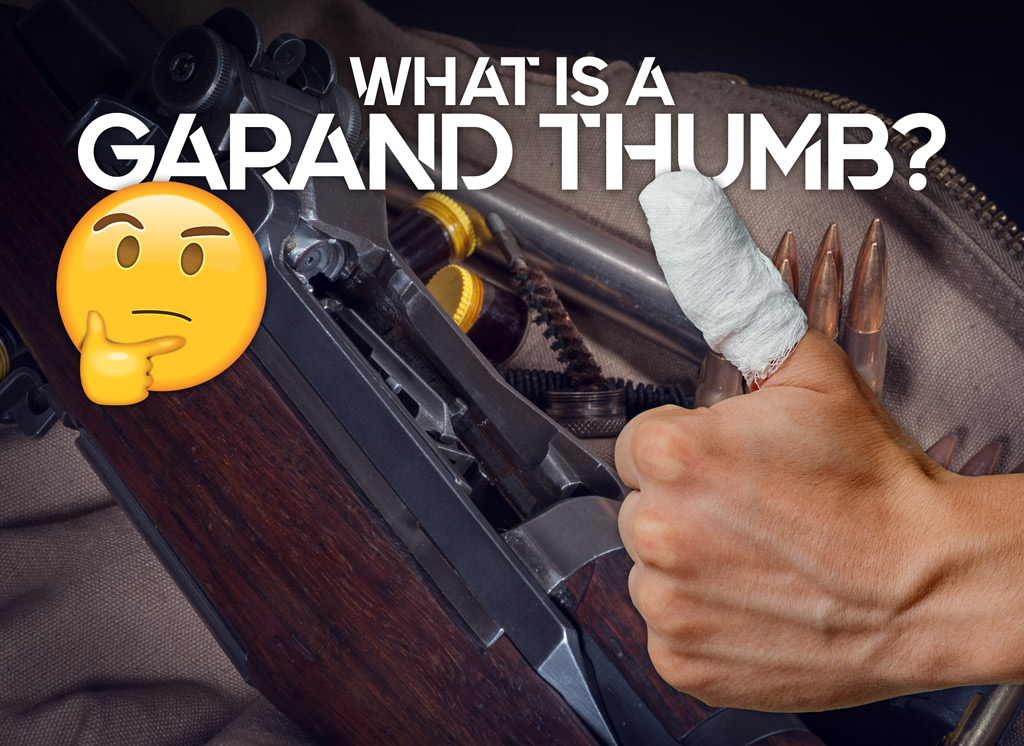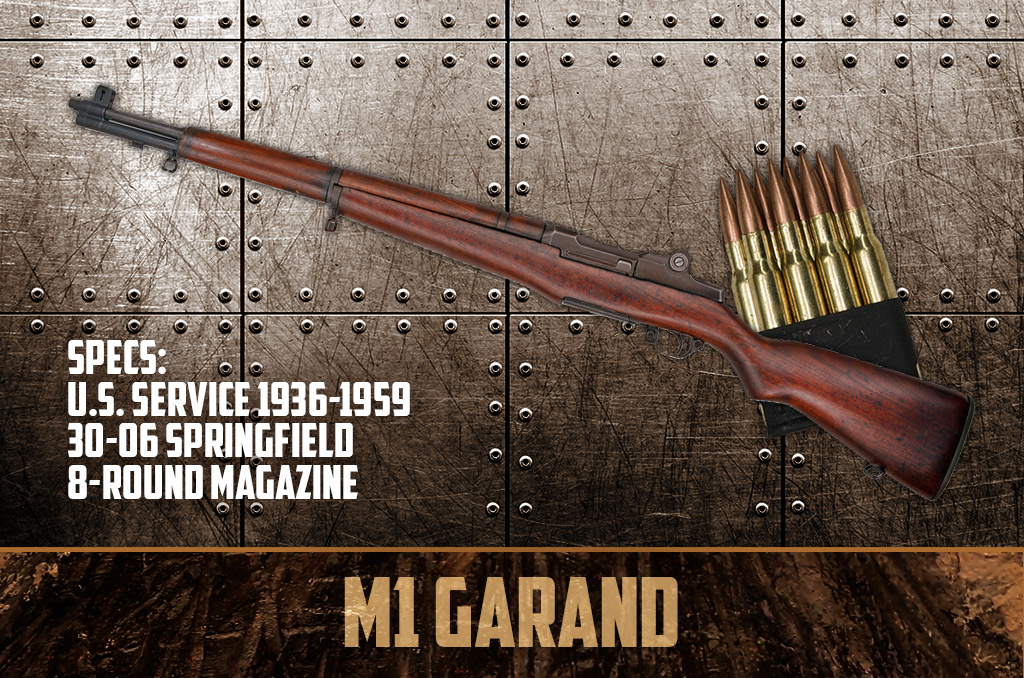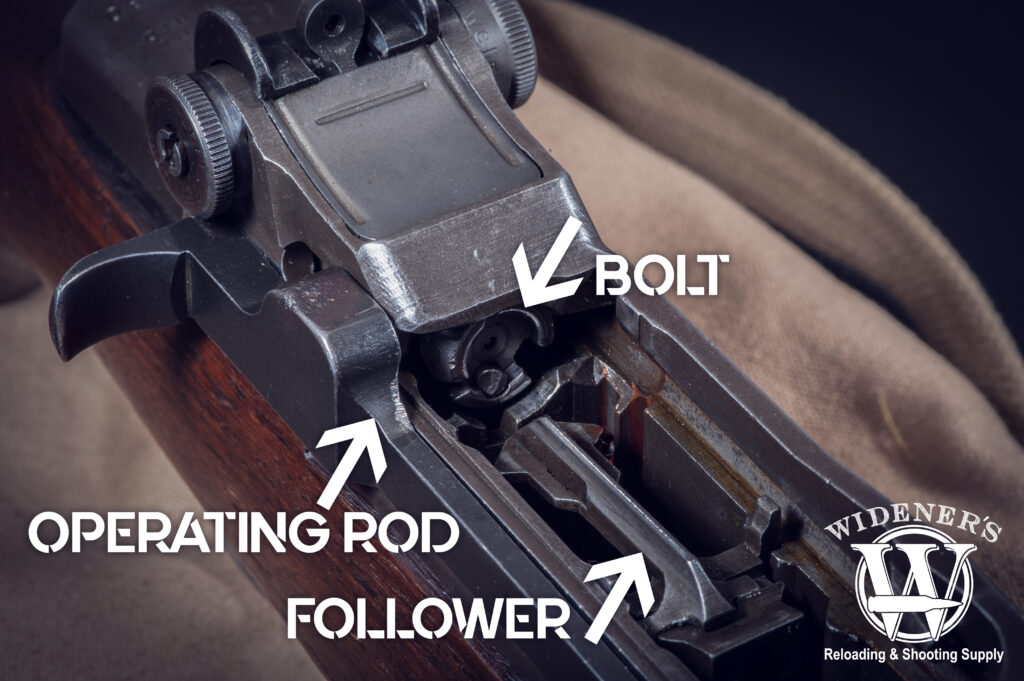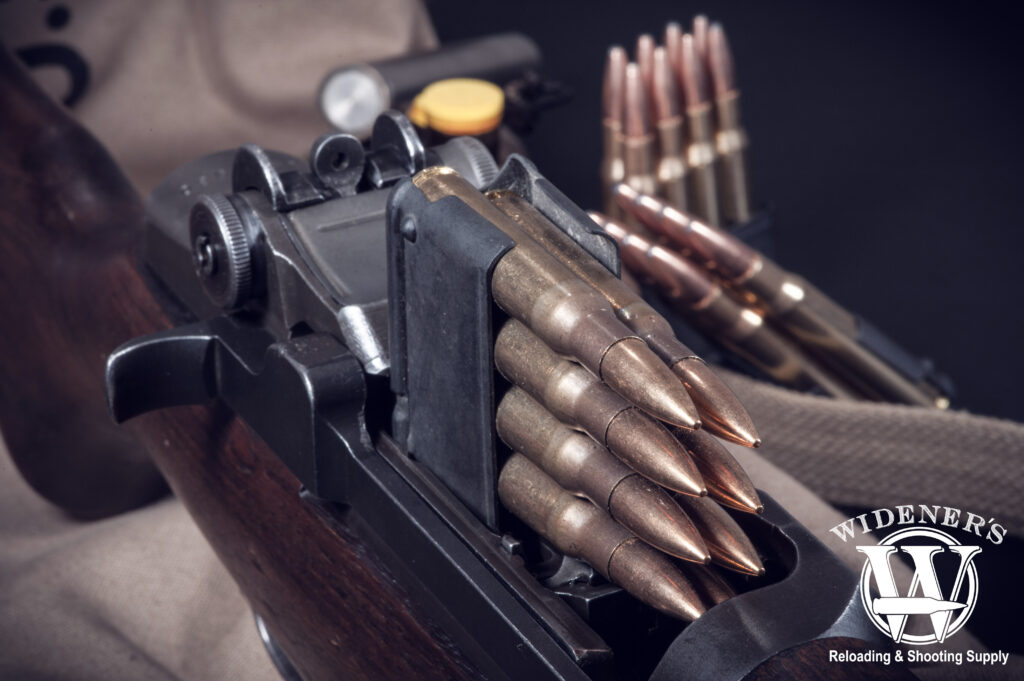

What comes to mind when you hear the phrase Garand thumb? Is it the YouTuber (a.k.a. Mike Jones) showing videos of firearms and combat techniques on his channel? Or is the banged-up thumb or discolored thumbnail you got from the bolt of an M1 Garand slamming closed on it?
If you’ve ever reloaded an M1 Garand rifle, you likely remember the pain you felt. Or the four-letter words you spewed–the first time the bolt pinched your thumb.
So, what’s up with the M1 thumb, as it’s also known among some shooters? Does a poorly designed semi-automatic rifle cause it, or is it carelessness on the part of the operator? Let’s start by looking at a brief history of this battle-tested weapon. Then you can decide for yourself.
M1 Garand: History & Design

The mighty M1 Garand was in active U.S. Military service from 1936-1959.
The Massachusetts-based Springfield Armory hired John Garand shortly after the Great War ended in 1918. They tasked him with designing and developing a gas-actuated, self-loading infantry rifle. The specifications included being capable of ejecting the spent cartridge and reloading another round.
Over 15 years, Garand perfected a prototype that the U.S Army eventually approved and patented. In 1936, the Garand Rifle became the Army’s standard infantry rifle, replacing the bolt-action M1903 Springfield. The M1 Garand was the first successful semi-automatic rifle adopted by a military power based on a gas-operated system with a rotating bolt action.
At 9.5 pounds and 43″ in length, and chambered in .30-06 Springfield, the M1 Garand was a beast. It provided excellent service to U.S. troops during World War II and the Korean War. Gen. George Patton, not known for casually bestowing praise, called the M1 “the greatest battle implement ever devised.” So why has this fine firearm not only instilled fear in the enemy but also in those who shoot it? Hint: It’s not a design flaw!
A not-so-funny saying has been circulating among gun enthusiasts for many years. There are two types of shooters using the M1 rifle, those who have already gotten a Garand thumb, and those who will.
Fortunately, this painful event is preventable since it’s caused by user error most of the time. Although a rare mechanical malfunction in the M1 could allow the bolt to shut suddenly, it’s almost always a human malfunction that leads to a damaged thumb.
Why Does The Bolt Close So Suddenly On Your Thumb?

To avoid getting Garand thumb, you must be familiar with the rifle’s operating rod handle, bolt, and follower.
To understand and prevent Garand Thumb, you need to be familiar with three essential parts of the rifle. The operating rod handle, bolt, and follower. Grabbing the operating rod handle and vigorously pulling it back will lock the bolt in place. When fully retracted, the bolt is behind the follower but not touching it.
Shooters set themselves up for a nasty case of Garand thumb when they don’t pull back the operating rod handle hard enough to lock the bolt, and it ends up resting against the follower. At that point, the friction between the bolt and the follower is all that’s keeping the bolt from snapping shut. All it takes is for you to bump the rifle or stick your thumb into the receiver and touch the follower. At a speed that’s about the same as a hammer coming down on your thumb. Congrats, you will have joined the Garand Thumb Club.
How Can You Prevent Garand Thumb?
Anytime you handle an M1 Garand, immediately retract the bolt and confirm that it’s locked in place properly. Once you do this, you can safely clean the rifle and access the internal components without worrying that the bolt will give you an unpleasant surprise.
In fact, when the operating rod is properly locked in place, you can press down the follower almost all the way—that is, as long as you don’t touch the operating rod while you’re depressing it. Doing that will cause the bolt to snap shut immediately. And you probably won’t be able to react fast enough to get your thumb clear of danger.
If you’re unsure, here’s how to identify a properly and improperly positioned bolt. View your M1 Garand from the top with the bolt locked in place. Notice the gap between the bolt and the follower. If there isn’t a gap, and the bolt is resting on the follower, the bolt is improperly positioned for loading. The stage is set for a butchered thumb unless you pull back on the operating rod handle and lock the bolt back correctly.
How To Safely Load An M1 Garand

When pressing a clip into the M1 Garand, be sure to ride the operating rod handle with the heel of your right hand.
Start with the safety in the “on” position and the rifle pointed in a safe direction. With the bolt locked back into position, place the palm of your right hand against the stock with the heel of your hand blocking the operating rod handle.
Insert the clip with your right thumb. The clip will initially prevent the bolt from catching your thumb. Still, you will eventually push the clip deep enough to release the bolt, and having the side of your hand against the operating rod handle keeps the bolt from trying to ram your thumb into the chamber!
Once you release the downward pressure on the clip, the powerful operating rod spring will send the bolt home, but by then, you will have your thumb out of the way.
Safely load the M1 with the hand’s palm against the stock, the heel holding back the operating rod handle, and the thumb depressing the clip.
Garand Thumb: No More Excuses
Once you know why Garand thumb occurs, you should no longer be in danger of joining the ranks of those who experienced it. The more you practice reloading it correctly, the more it will become second nature. You’ll be looking forward to using your M1 rifle instead of fearing the possibility of a dreaded Garand thumb. If you enjoy shooting and collecting historic weapons, be sure to check out our Weapons Of World War II article at this link.


